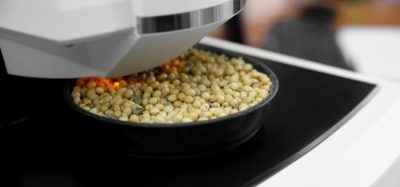Twenty years of dealing with a crisis
- Like
- Digg
- Del
- Tumblr
- VKontakte
- Buffer
- Love This
- Odnoklassniki
- Meneame
- Blogger
- Amazon
- Yahoo Mail
- Gmail
- AOL
- Newsvine
- HackerNews
- Evernote
- MySpace
- Mail.ru
- Viadeo
- Line
- Comments
- Yummly
- SMS
- Viber
- Telegram
- Subscribe
- Skype
- Facebook Messenger
- Kakao
- LiveJournal
- Yammer
- Edgar
- Fintel
- Mix
- Instapaper
- Copy Link
Posted: 23 May 2007 | Karen Masters, Business Development Manager, Emergency Response Service | No comments yet
Shortly after Reading Scientific Services Ltd formed its Emergency Response Service (ERS) in 1987, the UK food industry faced one of the biggest, and most public, extortion attempts ever to occur. A former Metropolitan police detective, Rodney Witchelo, had begun his campaign to extort money by contaminating jars of baby food with fragments of glass and razor blades.
Shortly after Reading Scientific Services Ltd formed its Emergency Response Service (ERS) in 1987, the UK food industry faced one of the biggest, and most public, extortion attempts ever to occur. A former Metropolitan police detective, Rodney Witchelo, had begun his campaign to extort money by contaminating jars of baby food with fragments of glass and razor blades.
Shortly after Reading Scientific Services Ltd formed its Emergency Response Service (ERS) in 1987, the UK food industry faced one of the biggest, and most public, extortion attempts ever to occur. A former Metropolitan police detective, Rodney Witchelo, had begun his campaign to extort money by contaminating jars of baby food with fragments of glass and razor blades.
It was a crime that changed the way the industry dealt with food scares, because, whilst the crime in itself was serious enough, once the popular press got hold of the story, it spawned a raft of copycat cases. These came either from criminals who were minded to try the same techniques, or from individual consumers who saw a quick way to gain compensation for the glass that they had ‘found’ in their products. Then there were other complaints, this time from customers who had been alerted by all the press reports, and were genuinely concerned that they had come across a problem of their own.
Of course, glass analysis was not the only source of work for the ERS in those early days, any more than it is today. But the Witchelo case did have the impact initially of skewing demand for the ERS hugely in that direction. Almost half the cases dealt with by the ERS in the late 1980s were investigations involving glass.
The majority had nothing to do with the Witchelo case, but they did reflect the level of publicity that foreign body incidents could now be guaranteed to generate. The food industry had suddenly become a target for sensational press reporting, and any incident of consumers finding ‘something strange’ in their food would be certain to make the papers.
Experienced and expert
The analysis of glass fragments is still an issue for the ERS, but not quite at the levels of the late 1980s. That’s partly due to the reduction in the amount of glass packaging used by the food industry, but also due to the fact that RSSL’s expertise is now employed in so many other areas. So alongside RSSL’s impressive database of glass fragments, against which it can compare any other fragments it is called on to identify, the company now has similar resources for plastic and metal.
Microscopy is always the starting point when investigating all such foreign body incidents. There is much that can be learned by examining the size, shape and surfaces of a foreign body with simple light microscopy. This can provide important information on its mode of manufacture, whether, for example, the original glass article was moulded (e.g. a bottle) or spun manufactured (e.g. light bulb). Surface interferometry gives information on the curvature of a fragment, distinguishing between flat glass (e.g. window) or curved glass (e.g. tumbler, milk bottle). Using this technique it is possible to estimate the radius of curvature of a minute glass fragment and thus form a conclusion about the diameter of the region of the item from which it originated.
Metal swarf from machinery is another common foreign body contaminant, with lubricants often being found as co-contaminants in this kind of case. However, metal fragments may arise from a variety of other sources such as packaging (laminated foil), even dental fillings. The origin of a tiny metal fragment or dust can only be determined once its elemental composition is known. X-ray microfluorescence spectrometry and X-ray microanalysis both allow distinctions to be made between different base metals, steels and other alloys. The same analysis can be used to determine any match between samples and reference materials supplied from the factory.
Similarly, plastic fibres can also arise from packaging or from wear and tear on fixtures in the process line. These constitute an increasingly common foreign body problem. A combination of microscopy and spectroscopy techniques can be used to identify these materials, with Fourier Transform Infra-Red (FT-IR) spectroscopy being used to characterise the chemical structure of the sample.
Differential Scanning Calorimetry can also be used to characterise plastics in terms of their melting point, degree of crystallinity and glass transition temperature. In some cases this will differentiate between different forms of the same polymer.
Chemical problems
Away from the microscopy laboratory, there’s a huge amount of work in detecting and identifying the trace levels of chemical contamination that ultimately lead to taints.
The taints issue is often particularly demanding. The principal problem here is that taints can arise from chemical contamination occurring at very, very low levels. There are some chemicals, like the notorious tribromoanisole, which cause a musty taint at concentrations at sub parts per billion levels. Unfortunately, it’s an unusually potent taint, but it is actually very common. It, and similar compounds like trichloroanisole, often occur as a consequence of storing wood based packaging (boxes, pallet etc) in damp conditions. Even an empty bottle that is stored on a pallet can pick up the taint because tribromoanisole is fairly volatile. It simply permeates in the air around the bottle and can taint the headspace after filling.
Some taints are relatively easy to identify purely as a consequence of their taste. An experienced chemist, aided at RSSL by the availability of trained sensory evaluation panellists, is often able to identify key characteristics of a tainting chemical by the taste and smell of the contaminated product. This sensory assessment can often direct the course of a laboratory analysis to enable the contaminant to be identified. Nonetheless it requires considerable skill and expertise to extract the offending chemical from a food product, which is already a complex blend of thousands of different chemicals, and then to identify the contaminant.
Whilst a taint or off-flavour, by definition, has a strongly associated taste or smell, not every chemical contaminant has. Hence, not every ERS investigation is carried out knowing in advance that the contaminant is actually present. It may be a case that a manufacturer is aware of some other factor that leads him/her to suppose there is a risk of contamination. It is the role of the ERS to ascertain the facts, and report back as quickly as possible.
Trends in contamination
Rather as glass analysis was a big issue for the 1980s, there have been several high profile chemical contamination scares over the past 20 years; Patulin in apple juice, benzene in soft drinks and 3-MCPD in soya sauces were all major issues for the 1990s. More recently, the food industry has had to contend with acrylamide in baked goods, semicarbazide in capped goods, and Sudan Red I in spices.
None of these issues have actually gone away, but now that the industry is more aware of the risks, the analytical requirement for dealing with these problems has switched more to routine testing to verify the absence of contamination, rather than emergency testing. Nevertheless, all of these chemicals do feature in the ERS caseload from time to time.
There’s no telling where the next big food industry scare might come from, but one area of investigation that seems to be gathering pace is the analysis for food allergens.
Now that the EU has published its list of 14 allergens that must be labelled if present in food, and now that consumers are ever more aware of their own response to certain foods (allergic or otherwise), consumer complaints are on the increase. An increasing number of ERS cases are concerned with verifying the absence or presence of allergens.
RSSL is fortunate to be able to bring complementary techniques of protein and DNA analysis to bear on allergen detection. Beyond the scope of the EU list, RSSL has been working to develop tests for allergens that are not so well known, but that still affect a significant number of consumers, and could be fatal for a few. Hence it has reliable methods for detecting small amounts of a host of different nuts such as walnut, pistachio, pine nut, and chestnut.
It is only recently that RSSL’s allergen identification services have come within the scope of the ERS, a sure sign that demand for emergency investigations is increasing. As with taints, the essential problem with allergens is that it can only take a very low level of contamination to cause a major problem. Indeed, for an allergic consumer, there is no safe or acceptable minimum level for an allergenic ingredient, and until manufacturers are more confident of their suppliers’ and their own standards for free-from production, it’s likely that allergens will continue to impact on demand for the ERS.
Combined approach
Just as DNA techniques are used in allergen identification, they are also used for detecting genetically modified ingredients, and also for speciation of meat and fish.
Where there is doubt about the authenticity of supplies, DNA methods can be valuable in providing some answers. It is also the case that DNA methods can be linked back to the foreign body work of the microscopy laboratory. For example, where an animal bone is found within a product, it may be that some DNA can be extracted to indicate the animal from which it came.
Investigations often involve a multi-disciplinary approach. A taint may be attributable to a particular chemical, but the source of that chemical might be microbial spoilage. A precipitate might appear as a foreign body within a drink, but the core problem might be some chemical imbalance between two ingredients.
When the ERS was launched in 1987 it was the first such service of its kind. The fact that it has been around for 20 years suggests that the food industry’s need for emergency analysis is as great as it ever was. There’s nothing to suggest that the next 20 years won’t also have their share of scares and crises, but at least access to emergency analytical support means that the a food producer is better equipped to cope should the crisis happen to them.









